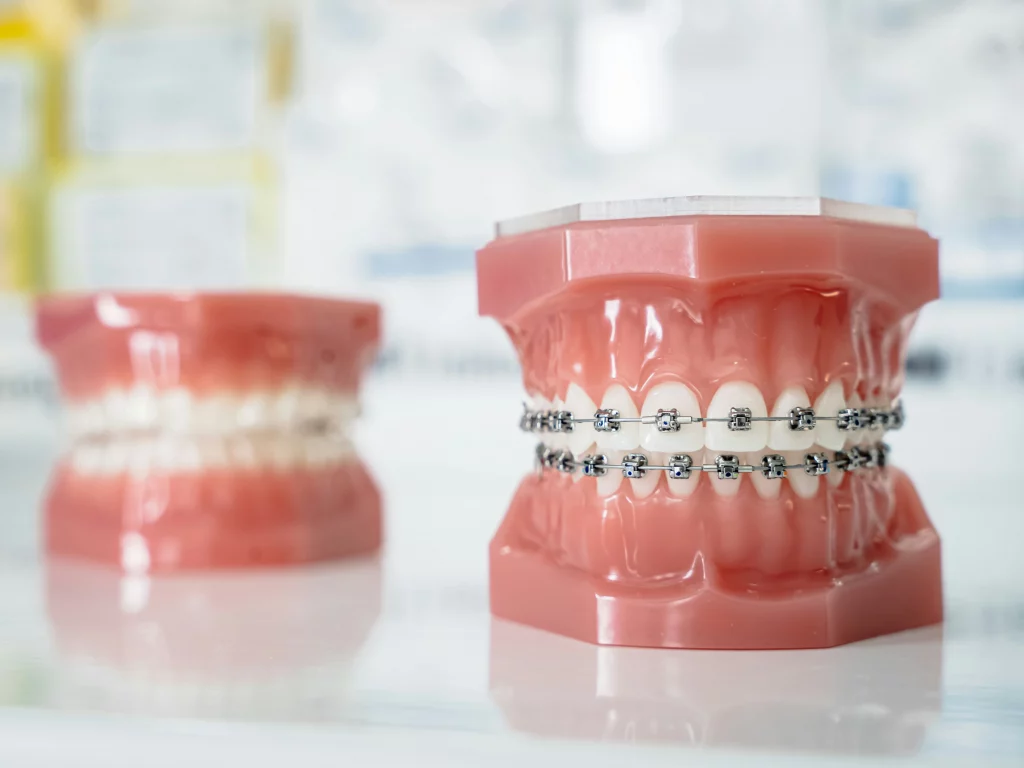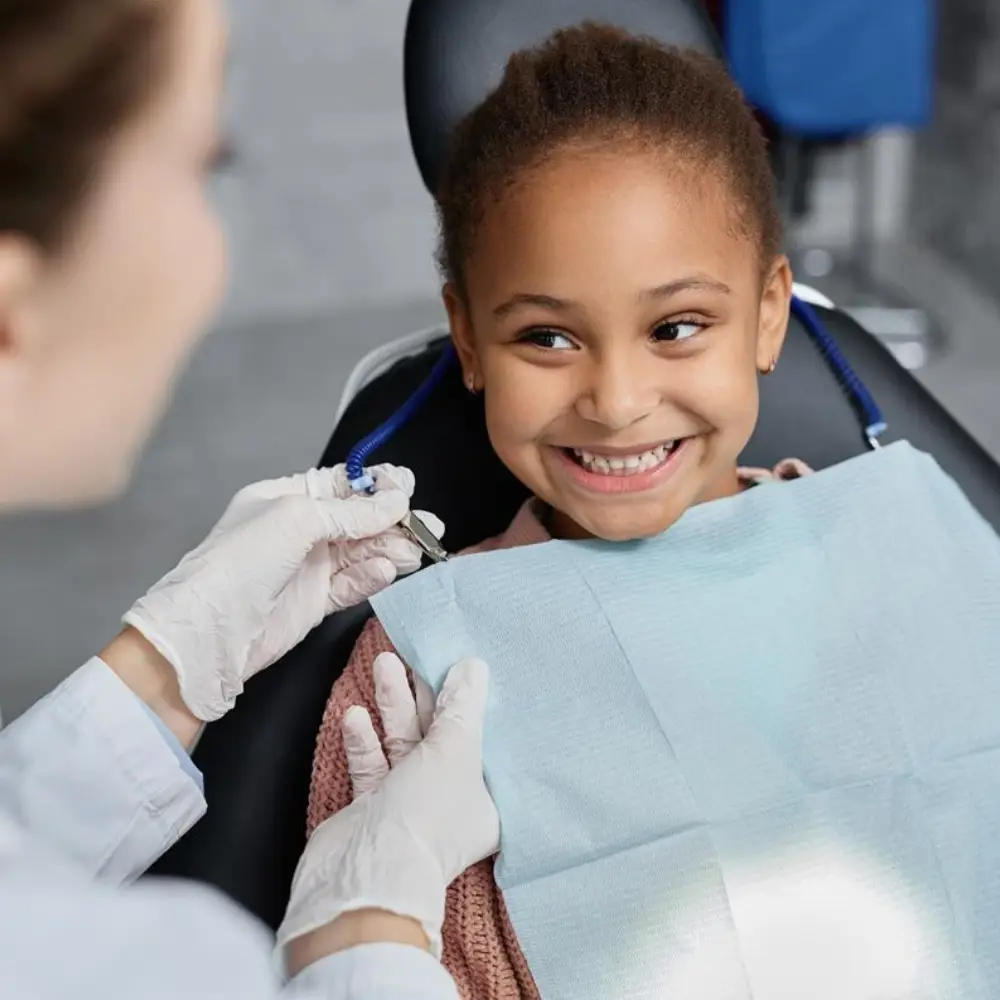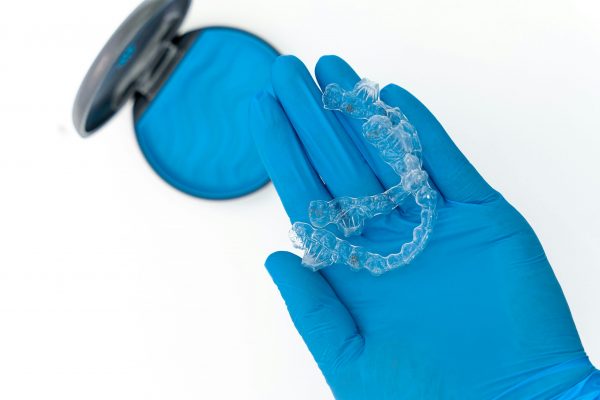Invisalign can help not only correct the alignment of the teeth, but also know how articulately your child speaks. Enunciation is very crucial in the areas of assurance and communication particularly among children already having issues on articulation. In this blog, we will discuss how the usage of Invisalign might help with the process of better articulation, what difficulties might be encountered during the treatment, and whether it suits children who are improving their speech.
How Invisalign Affects Speech in the Short Term
Invisalign aligners will not only turn your smile into the one of your dreams, but they have the ability of temporarily altering the manner in whish you speak. Trays slightly interfere with the movement of your tongue since they provide an extra coat to your rows of teeth; although, this could be due to the presence of an extra coat during the initial days of usage. You will normally have slight changes in what you say as you get your mouth used to it.
During the early stages of treatment, most of the people have minor problems such as lisp and mellowing of pronunciations. Understandably, these also tend to correct themselves relatively soon with frequent use and some basic speech methods. Learning about the way Invisalign may affect your speech can speed up the process, especially since you would feel less intimated by the process.
Common Speech Adjustments in the First Few Days
At the beginning of wearing Invisalign your tongue has to get accustomed to the new formation of your mouth. The fact that the aligners are flat on the teeth means that they provide a slightly different sounding environment especially against the s, sh, and z sounds.
Most patients discover that lisps or changes in speech are minimal in nature and fleet after a few days or a week. The time taken is different according to the frequency of usage of these aligners and the natural movement of the tongue during verbalization. Frequent usage is of essence to faster coping.
Lisping with Invisalign: Why It Happens and How to Fix It
One of the most widespread temporary changes noticed with the Invisalign is a temporary lisp. This is the case since the aligners make slight alterations in the place that lies between the tip of your tongue and the roof of the mouth or the teeth in producing some specialized sounds.
What is the best cure? Practice. Reading out loud, saying tongue twisters, and speaking every now and then when in the aligners would make your mouth unlearn to talk more quickly. There are certain occasions when your dentist would be able to cut on the edges of your aligners in case they exert abnormal pressure on your tongue.
Tips to Adapt Quickly to Speaking with Aligners
Although speaking to Invisalign may seem awkward at first, there are some small tricks that will help you adjust to this rather quickly. Speak to yourself every day even when you are alone and see how clearly you can read outloud by reading books, articles or emails. The most important thing is to be consistent and hence wear your aligners 20-22 hours a day, more than this ensures that your mouth gets used to working with the aligners faster.
Keeping the body hydrated also helps to minimize excess saliva which at times interfere with pronunciation. Do not talk in whispers as it will only draw attention to any lisp that can be temporary. Within a week or two most folks feel that they are talking quite natural once again, and no one would guess there had been the slightest difference.
Invisalign and Long-Term Speech Improvement

Although an initial period of adaptation may be experienced initially, in the long run Invisalign can in fact bring long-term positive results to the speech clarity. Pronunciation problems are common culprits who become in this case victims of poor bite and dental alignment. When the issues, which have caused such problems, are resolved, there is a common tendency to have distinct pronunciation and consistency.
Can Invisalign Correct Bite-Related Speech Problems?
In most instances, yes. When the jaw does not shut correctly or the teething front teeth are too separate it may block the movement of the tongue to help communicate. Articulation issues may arise as a result of overbites, underbites and open bites. Correction of such problems results in a more stable base in making the speech precise and natural with the assistance of Invisalign.
Speech Issues Caused by Tooth Misalignment
When the teeth are not aligned properly, they might create negative effects on the ability to speak clearly. They can lead to a whistling or slurring of some of the consonants, lisping particularly of the s and z sounds or an inability to regulate the flow of air in speech. These problems may also cause uneven consistency between pronunciation of various sounds that will not be noticed until one records himself/herself speak, or gets in trouble speaking publicly. These deeper alignment problems can be slowly resolved with Invisalign, allowing your bite and teeth to move closer to the correct positions and becoming clearer in speech sound at the same time.
Orthodontic Treatment Benefits for Articulation
More understandable speech is not always the main desired outcome of orthodontic correction, but it is a quite expected positive side effect. When the teeth and the jaw are well fitted, the tongue will be given room to move and it can easily reach the correct surfaces. It results in a sharper and more standard way of pronunciation. These are minute but significant improvements that an individual constantly relying on distinct speech, such as the teachers, the speakers who address people openly, and the sales executives, tend to observe and appreciate.
Invisalign vs. Braces for Speech Challenges

Both Invisalign and orthodontic braces can affect your speech call at least temporarily when it comes to orthodontic treatment. But they can in different ways influence how well you speak clearly. The slick, removable Invisalign trays are usually moving in an easier way, whereas the braces with metals bracket and wire can initially bring about more noticeable speech impediments. Knowing these differences should aid you in selecting the alternative that best fits your dental needs as well as communication requirements.
Which Treatment Has Fewer Speech Side Effects?
Overall, Invisalign induces less initial side effects of speech than traditional braces. It can change how words are formed, causing an irritation of the lips and cheeks as a result by the use of metal brackets and wires which found it difficult at times. Accordingly, the custom-fit smooth aligners of Invisalign will enable faster, easier adjustment and express yourself sooner as well.
Why Clear Aligners May Be Preferred for Professionals
People performing the functions of the client service or speaking in front of the audience have to take appearance and clarity of speech into account. The trays of Invisalign are almost invisible, and you will be able to look professional without paying attention to the orthodontic treatment of your teeth. After just a few days, any slight changes in speech are gone, therefore, you will not have to worry about pronunciation mistakes, having food in the braces, or being incomprehensible at a meeting or in a call.
Real-World Experiences with Invisalign and Public Speaking
Most Invisalign users that wear them professionally mention that they experience a small change in their voice after a very short time, but in most of the cases, and only by some people. In the greater majority of instances they discovered themselves to be too self conscious. They adapted within a short period and went back to having complete confidence in their speech with a bit of patience and frequent practices in their speeches.
Best Practices for Communicating Clearly with Invisalign
You might not be able to talk perfectly when you wear Invisalign, but with some strategies, you can ensure that communication is clear and confident through the treatment period. The first step is to talk aloud every day, reading or talking to yourself about difficult phrases, so that your mouth will get used. Pay attention to the regular wearing (20-22 hours daily) to accelerate the process of adaptation. Drink a lot of fluids to keep saliva to a minimum and do not talk in a whispering tone as this will enhance any lisp.
When you have an important presentation or a meeting to participate in, you should practice with your aligners in order to make the delivery natural. And keep in mind that, in most cases, your surrounding humans will not pick up on changes you are concerned about the least amount of all, they will see through your confidence.
Speech Exercises While Wearing Aligners
Tongue twisters are very good at enhancing clarity, begin with a slow pace, and then build the momentum with practice. Reading in loud voice, and reading children books in particular, focuses on resolute pronunciation and increases the level of sound errors detection. Use some vocal exercises in getting ready to conversations such as humming or vocalizing vowels. At last, engaging in mirror work- observe how you speak and the movement of your tongue as well as where it rests. Such visual feedbacks assist in the correction of pronunciation nuances.
When to Remove Invisalign for Important Conversations
You are allowed to remove Invisalign aligners when you have a significant meeting, presentation, but avoid using it as a habit. Periodic deletion is quite alright, more so in the initial adjustment period. You need only make sure that these breaks are not too long so that you end up fulfilling the advised 20 22 hours of wearing them daily. Being regular will keep your medical routine up to date.
How to Gain Confidence During the Adjustment Period
Gaining confidence to spy with heading to Invisalign would be a better option. The first thing you should remember is that short-term changes in the speech are normal, it is only your mouth which requires time to get adjusted. Record your voice and then play it back, most likely it will sound better than you might think it would. Alternatively, it is possible to consult with trusted friends or colleagues asking them whether there is anything different. Most individuals will not. Last but not least, remember to focus on what you are saying and not on the tone of your voice in case the confidence may take precedence over perfection.
Frequently Asked Questions (FAQs)
1. Will I sound different when I wear Invisalign?
You may notice a slight lisp or change in pronunciation during the first few days of wearing Invisalign. This is completely normal and typically happens as your tongue adjusts to the presence of the aligners. Certain sounds like “s” and “z” might feel different at first, but most people adapt quickly. With consistent wear and a bit of speaking practice, your speech will begin to feel natural again. Many users find that the change becomes barely noticeable within a week or two. The key is to keep talking whether it’s reading aloud, chatting with friends, or practicing presentations.
2. Can Invisalign help correct a speech impediment?
Yes, Invisalign can help improve speech especially if your issues are caused by bite misalignment or gaps between teeth. By gradually aligning the teeth and jaws, Invisalign creates a more balanced, functional space for the tongue to move and form sounds. This improved alignment often makes it easier to pronounce words clearly and consistently. While it’s not a replacement for speech therapy, it can work hand-in-hand with it to enhance results. Many patients find that as their smile improves, their speech naturally becomes more precise too.
3. How long does it take for speech to return to normal with aligners?
Most people adjust to speaking with Invisalign within 3 to 7 days. The more you talk while wearing the aligners, the faster your speech adapts. Reading aloud or practicing conversations can help smooth the transition. Any minor lisp or pronunciation change usually fades quickly. However, if you still notice speech issues after two weeks, it’s a good idea to check in with your provider. They may be able to adjust your trays for a better fit and improved comfort.
4. Should I remove Invisalign when giving a presentation?
Yes, you can remove your Invisalign aligners if you feel uncomfortable speaking at first, but it’s best to keep them in and practice. The more you talk with them on, the faster your mouth will adapt. Taking them out occasionally is okay, especially for important conversations, but try to limit these breaks. Reducing your wear time too often can delay your progress. The goal is to get comfortable speaking naturally with the aligners in place.
5. Is Invisalign better than braces for people with speech issues?
In most cases, yes, Invisalign tends to have fewer effects on speech than traditional braces. Its smooth, custom-fit trays are less intrusive and more comfortable, making it easier to adapt quickly. Unlike metal brackets and wires that can cause irritation or alter tongue movement, Invisalign allows for more natural speech. This makes it a popular choice for those who rely on clear communication, such as professionals and public speakers. While a slight lisp may occur at first, it usually fades within days. Overall, Invisalign is often the preferred option for maintaining speech clarity during treatment.
If you’re ready to align your smile without compromising your voice, Invisalign may be the right path. Whether you’re in the spotlight, on video calls, or leading meetings, Invisalign helps you speak clearly while discreetly transforming your teeth.
Schedule a consultation today to learn how Invisalign can enhance both your speech and your confidence. Our team will guide you through every step, from your first aligner to your final, confident smile. Don’t wait to take control of your appearance and your voice, book your Invisalign evaluation now.


